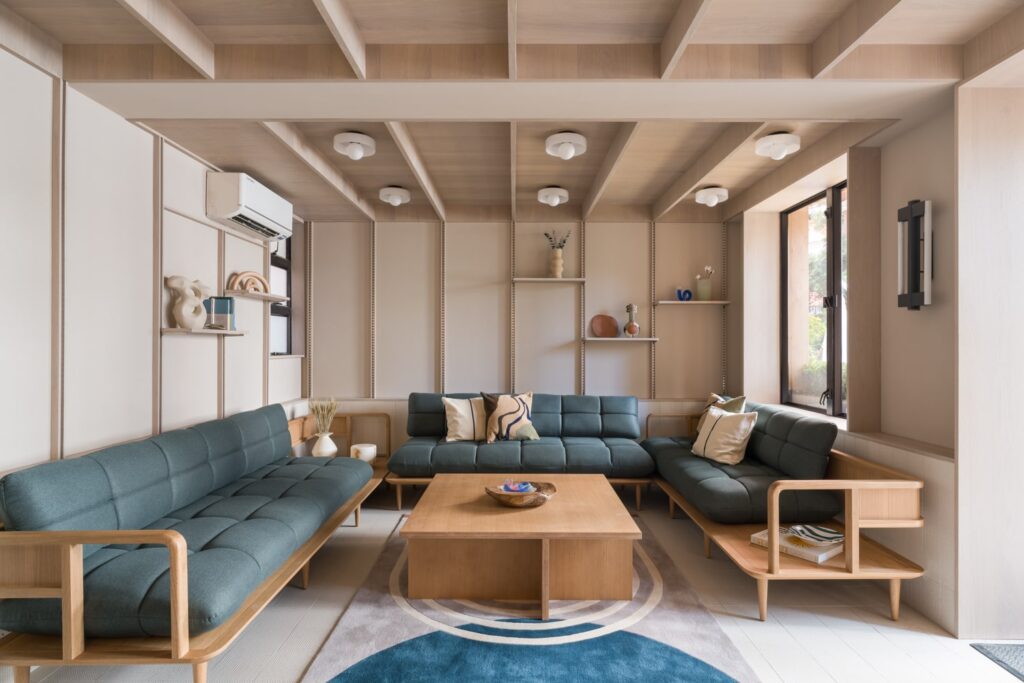Since its inception, Hong Kong-based Langham Hospitality Group has been synonymous with luxury. The Langham, London is proof: it’s the longest-standing hotel in Langham’s portfolio and when it originally opened in 1865, it was considered Europe’s first “grand hotel.” The derivation of the Langham name even comes from its location on Langham Place.
The Langham was sold to Great Eagle Holdings in 1995 and the brand has since expanded to include 20 hotels and more under development under the Langham badge, while in 2015, Cordis Hotels & Resorts was launched to serve the upper-upscale segment.
Now, the sybaritic Langham is dropping into another chain scale, some rungs down, rolling out Ying’nFlo, a brand that is being developed for the upper midscale space with the millennial and Gen-Z traveler in mind—the website opens on a young woman in a leather jacket, donning headphones and enthralled in whatever is playing through them.
The first Ying’nFlo opened in Wanchai, Hong Kong in October 2022, in the same building as parent Great Eagle. (Initial room rates are between $115 and $150, depending on room type.) There are plans to expand rapidly in the region, with a pipeline that includes a hotel in Xiamen, as part of Langham Hospitality Group’s first multi-brand project.
The brand’s intro press release has all the hallmarks of what a trendy, hip, new brand strives to convey: art and music, tech-forward, brilliant basics, flexible design serve as subheads with an opening that reads “Hang with Ying’nFlo.” In it, the brand is described “as a place that feels like a friend’s apartment, only better!”
Design studio Linehouse was tapped to bring the brand to life.
Ying’nFlo is under the auspices of a powerful investment company, to be sure. But does it have the to stand out in the already cluttered midscale, lifestyle place? HOTELS spoke to Shelley Tso, VP of marketing at Langham Hospitality Group, to get lowdown on this high-end company’s mid-tier sally.

1) What is the derivation of the Ying’nFlo name?
Ying is a philosophical concept that describes the opposite, but with interconnected forces, so the name is a play on the considered balance between personal space and interactive communal areas. Ying’nFlo is inspired by the lifestyle and values of the younger traveler. Its communal spaces offer a sense of co-living and sharing of space with like-minded strangers who can become friends or even collaborators over music, a foosball table or sparking of a conversation over coffee on the terrace.
2) Langham has always been synonymous with luxury. Why is it pivoting into the midscale segment?
While The Langham brand itself is synonymous with luxury, we have operated in a number of different spaces as Langham Hospitality Group, including the upper-upscale Cordis brand. This midscale select-service brand was a clear gap in the offerings we can make available to owners, who were seeking this segment for their investments. Ying’nFlo is positioned to be an additional growth engine in a market segment we have yet to tap. It also serves to round out the portfolio where we can offer our audiences an offering in each key segment.
3) It’s an already crowded segment, too, how will Ying’nFlo be a differentiator?
Hopefully through what we call the “brilliant basics.” At the heart of Ying’nFlo will be the necessities our travelers require—executed to perfection. These naturally include a powerful shower, a comfy bed, fast and reliable wi-fi, as well as a laundry station, smart home features, great coffee and breakfast.
It’s a brand that is digital first in its approach. Recognizing millennials and GenZers have largely grown up with a mobile device, they are more comfortable doing everything with them, including booking stays and communicating with the hotel. Ying’nFlo’s app ecosystem allows them to book a room and control every aspect of the room, from opening the door and switching on the TV to turning down the air conditioning system and more.
4) Will Langham operate these properties or is there a franchise opportunity?
The new lifestyle brand is targeted at giving partners, franchisees and operators an efficient business model to grow asset value and target a profitable market segment. There are ongoing discussions with developers and partners to bring this to market.

5) Could these co-locate with Langham or Cordis properties?
Absolutely! In fact, the Ying’nFlo in Xiamen will co-locate with The Langham and Cordis branded hotels in that city, and we launched in our home base of Hong Kong where we already have both brands. The addition of the Ying’nFlo brand gives us additional opportunities to add value to owners looking for multi-brand hospitality asset managers.
6) Will growth be via new builds or conversions? Both?
Both. Ying’nFlo is flexible in this respect. The concept behind Ying’nFlo allows owners to build a recognizable and profitable brand with an optimized investment level and indeed speed to market. The model also allows us to work with owners to be flexible in terms of a management agreement, a franchise or even a lease arrangement.
7) Why are marketing and building concepts for millennials and Gen-Zers so important?
The segments are relatively underrepresented with a strong brand that speaks their same language, meets their needs and genuinely takes this into account. By the numbers, Ying’nFlo has enormous potential with Asia being potentially the most important market given that 60% of millennials and almost 25% of Gen-Z live there.
8) Initial expansion looks to be in APAC. Do you foresee future growth in the U.S.? EMEA?
While the first confirmed properties are in Hong Kong and China, Ying’nFlo will have an international footprint. Its design concept and offering would be ideal for markets from Southeast Asia, India and the Pacific, through to select locations in Europe and North America.
9) How will design and technology play a role in the brand?
Ying’nFlo is designed as a place that feels like a friend’s apartment. Linehouse created Ying’nFlo spaces for urban travelers looking for a practical, well-designed place to stay, for whom standard hotel offerings are not the answer.
It’s a new wave of hospitality, focused on a genuine sense of a connected community, where smart living technologies help to build greater personal interaction and belonging.
10) How will operations differ, say, from a Langham hotel? Assuming a stripped-down workforce, how will margins increase based on lower operational costs?
We want to tap into the mid-scale, select service market and have strategically designed Ying’nFlo for the development of this segment. With technology and efficiency at its core, Ying’nFlo represents lower set-up costs and quicker ROI for owners.

